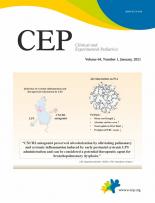Puberty is a transitional period between childhood and adulthood during which sexual maturation occurs. Menarche, the first menstruation, is a milestone event of pubertal development in girls since it represents the onset of the female reproductive capacity. Menarche, a late event during puberty, usually occurs 2-2.5 years after pubertal onset and is characterized by breast enlargement and pubic hair development. Several studies have reported that the mean age at menarche decreased from 17 years in 1840 to approximately 12 years in 2000 in most developed countries. According to a recent review, the age at menarche has remained stable over the past few decades [1]. Age at menarche varies among countries, generations, and races. According to the Korean National Health and Nutrition Survey, in Korea, mean age at menarche decreased from 16.90 years for women born between 1920 and 1925 to 13.79 years for those born between 1980 and 1985 [2].
Menarche is a complex phenomenon that is influenced by genetic and environmental factors. Approximately half of the variations in menarcheal age among developing countries may be due to genetic and heritable factors. The age at menarche is similar between mother and daughter, which supports the genetic influence on menarcheal age. Genome-wide association studies reported that several genes or loci, including LIN28B, TAC3R, ESR1, and 9q31.2, were associated with age at menarche [3]. Environmental factors including nutrition, psychosocial variables, and endocrine-disruptor chemicals also influence the timing of menarche. The decrease in menarcheal age can be explained by environmental factors such as nutritional status and the increased prevalence of obesity, although genetic factors also play a crucial role in pubertal progression.
Early menarche is usually defined as menarche before the age of 12 years, although some researchers set it at ≤10 or 11 years. In Korea, 21.4% of subjects experienced menarche before the age of 12 years in 2001 versus 34.6% in 2010/2011 [4]. Nutritional habits such as formula feeding during early infancy, increased subcutaneous fat, a high body mass index, early exposure to endocrine-disruptor chemicals, and the consumption of sugar-sweetened beverages (SSB) as well as the increased prevalence of precocious puberty are possible factors responsible for early menarche.
Early menarche is associated with physical and psychosocial problems such as anxiety/depression, substance use, and suicidal behavior in adolescents. It can also cause early fusion of the epiphyseal growth plates; therefore, the young woman’s final adult height may be shorter than her potential genetic height. In the Korean population, menarche before 12 years of age is associated with an increased risk of metabolic syndrome and type 2 diabetes mellitus in young and middle-aged women [5]. It has also been linked to an increased prevalence of obesity, insulin resistance, and hypercholesterolemia in adulthood, culminating in higher risks of cardiovascular diseases such as hypertension, coronary heart disease, stroke, and diabetes in women. Furthermore, women who experience menarche before 12 years of age have a 23% higher risk of developing breast cancer than those who first menstruate at 15 years of age or later [6].
Recent public concern about early menarche or precocious puberty has increased due to its adverse consequences in later life. Kim and Lim [7] suggested that such consequences can be prevented through health education targeting a reduction in the consumption of fructose, concentrations of which are high in SSB. Carwile et al. [8] reported that girls consuming more than 1.5 SSB per day experienced menarche 2.7 months earlier than those consuming less than 2 SSB per week. In Korea, the consumption of SSB rapidly increased from 32 kcal/day to 82 kcal/day over an 11-year period [9]. The removal of SSB from vending machines in schools and education to encourage the consumption of a balanced diet could be effective ways to reduce fructose consumption.
Menarche is not just a moment during pubertal progression. Its timing, especially when early, may be associated with several health problems in adolescence and adulthood. This finding highlights the need for increased awareness of and efforts to prevent early menarche.





 PDF Links
PDF Links PubReader
PubReader ePub Link
ePub Link PubMed
PubMed Download Citation
Download Citation


